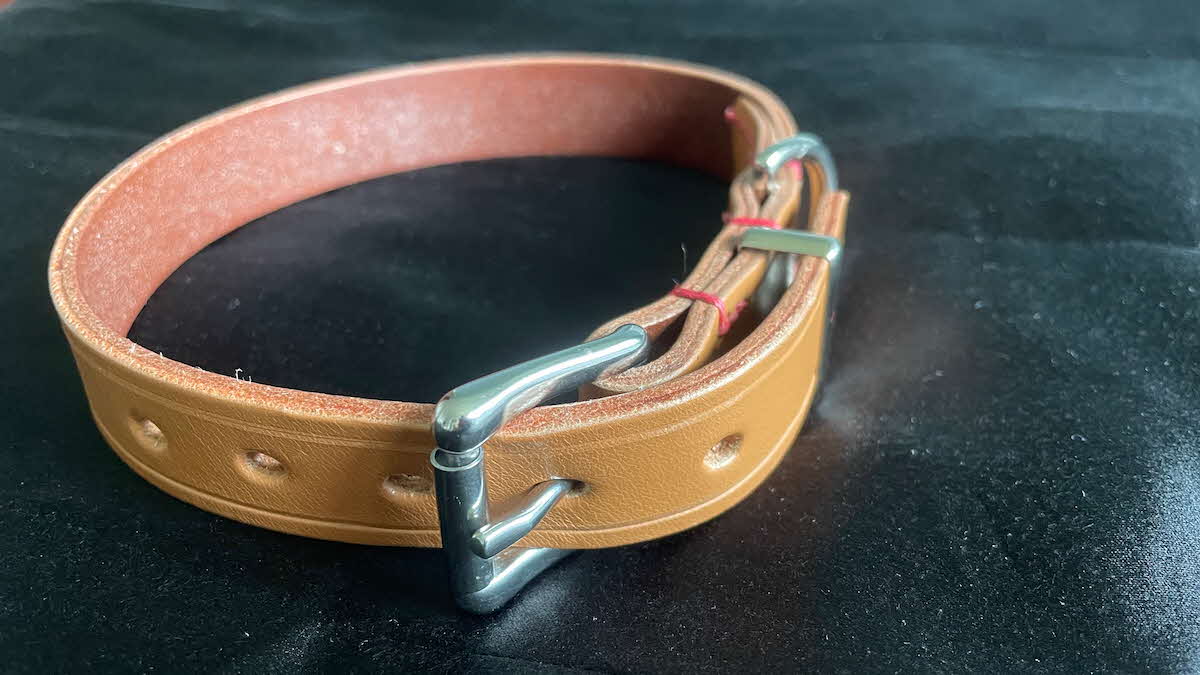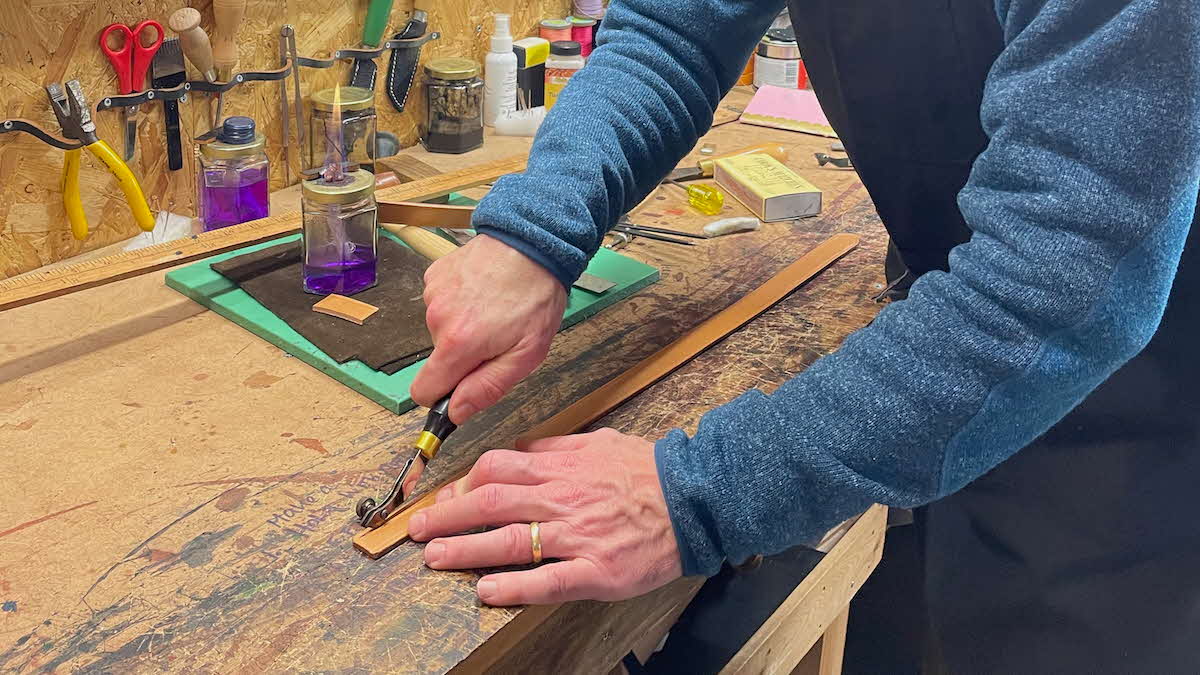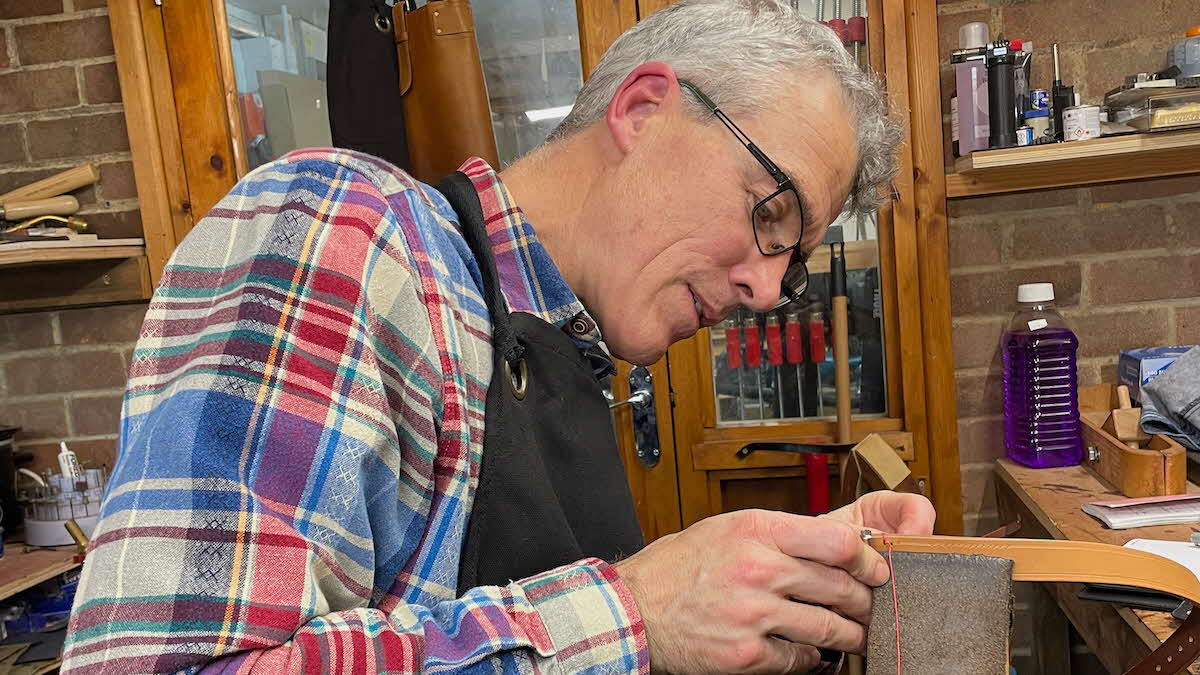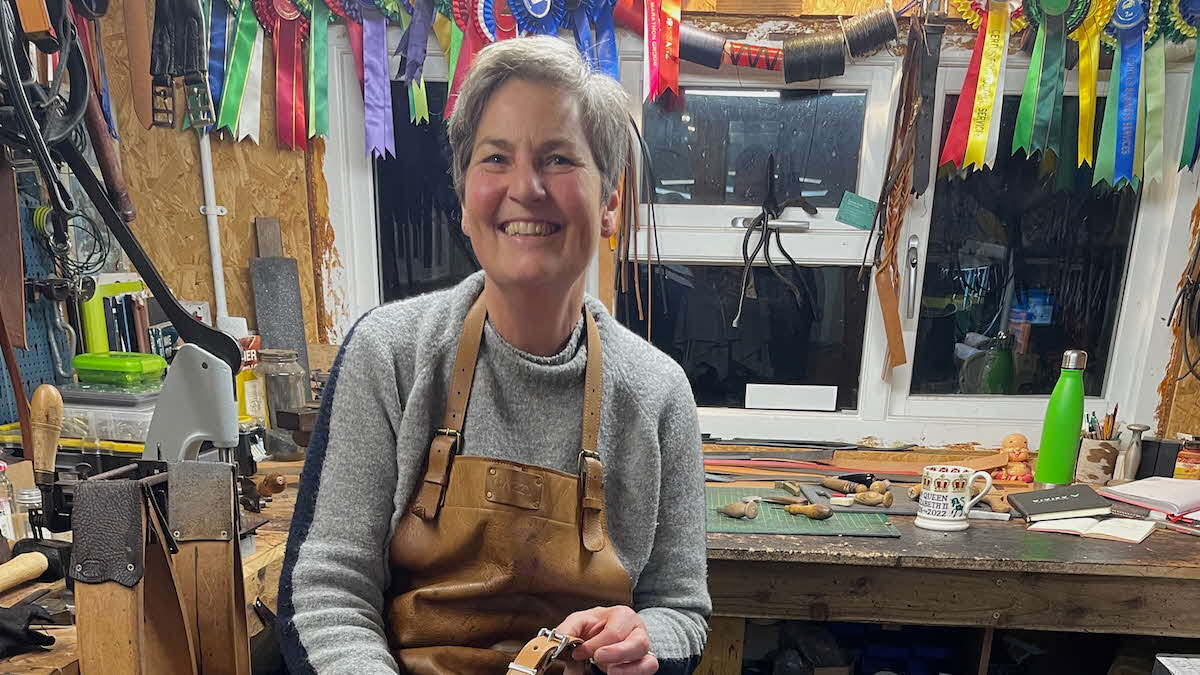Book a club campsite
Explore hundreds of Club campsites and plan for stays throughout the year. There are plenty of locations to choose from, search and book today.
Book nowJonathan Manning joins a leatherworking course in the New Forest, and creates a handsome, hand-stitched dog collar

If you popped into a pet shop prior to Christmas you’ll already be aware that the canine and feline products and accessories market is big business. Treats, toys, jackets and jumpers line the shelves. There are hats for dogs, advent calendars and festive stockings for cats. All of which prompts the question – what do you buy the pet that has everything?
Truth be told, we bought none of the above for our dog, a Labrador-spaniel cross. We don’t show or work her, and the only pampering she gets is a warm bath when she’s rolled in her favourite eau de fox poo perfume. She’s simply a much-loved family pet, occupying a place in our hearts far bigger than we will ever acknowledge until the kennel in the sky blows its whistle.
With two good walks a day, two tasty meals (she’s never complained) and a reserved spot by the fire, it’s hard to imagine what she might write in a letter to Santa. So, it’s more honest to think of this month’s activity as her gift to me.
Leatherworking has always looked fascinating – from saddlers making riding equipment to cobblers stitching a sturdy pair of brogues. Not wishing to aim too high, I’ve signed up to make a dog collar (of the canine, not ecclesiastical, variety) on a leatherworking course in the New Forest.
The cosy workshop is within easy reach of two Club sites, and is imbued with the luxurious scent of leather. Traditional-looking tools lie neatly on the workbenches, bobbins of different coloured waxed threads line the walls, and a pair of certificates testify to the skills of their owner. One is from the Worshipful Company of Saddlers, which can trace its roots back to London’s Guild of Saddlers that formed around 1160, and the other is from the relative newcomer, the Worshipful Company of Loriners, whose history starts in 1261 (a loriner makes the smaller metal elements of a horse’s harness, such as bits, bridles, spurs, and stirrups).
The holder of both certificates is Cazzy, a saddler who has developed a popular leatherworking course to help people make belts and dog collars. Wearing a smart leather apron and a big smile, she cheerily guides me through the afternoon.
As with the poshest of car seats, there’s the chance to select both the colour of the cowhide, and the stitching. Choices range from red to London tan, Australian nut and British racing green.
“This is oak bark tanned English bridle leather,” explains Cazzy. “It comes from a tannery in Cheshire and it’s the absolute Rolls-Royce of leathers.” Beautifully textured, it feels supple yet strong and substantial.
 Scoring a tram line with a creasing wheel
Scoring a tram line with a creasing wheel
The first task is to cut a strip of leather from the hide with a plough gauge, before chopping it to length with an ultra-sharp head knife. Then, using a pair of callipers, I gently scratch an arch at one end of a strip, practising again and again before pulling the leather through the knife to create the rounded end of the collar.
If the cutting feels like precision work, punching the holes requires more brawn than brain, albeit while running the twin risks of making a hole in the wrong place and swinging a mallet towards your fingers. Cazzy’s punch was made in 1915, giving pause for thought that it may once have been used in the production of First World War cavalry equipment. Good quality saddlery equipment lasts for aeons.
 Stitching the collar (held in a saddler's clamp)
Stitching the collar (held in a saddler's clamp)
Leather may be super tough, but it’s also sensitive – scuffs can’t be polished or sanded out, and become diary entries of clumsiness. Despite practising, I manage to leave a small scorch mark by dawdling for an instant too long as I draw a pre-heated creasing wheel along the edge of the collar. The pleasing tramlines now have a black spot that would condemn a designer handbag to the scrap heap, but it’s reassuring to know that my dog will be none the wiser.
With the strap cut and punched, what feels like the true art of leatherwork begins, as I fold one end of the strip back over the buckle (available in different shapes and a choice of silver or bronze) and grip it in a saddler’s clam. I’ve selected a rose-pink thread for the stitching because, well, because I can, and because it’s a colour combination unlikely ever to be seen in a pet shop.
Stitching, it turns out, is utterly engrossing. As with so many crafts, it demands total concentration, creating perfect mindfulness. I use a syringe-sharp awl to pierce a tiny hole through which two needles pass in either direction, forming a tiny knot on one side of the leather. This is a saddle stitch, so although I don’t cut the thread, each knot is independent of the next, which means the stitching won’t unravel like a cartoon jumper if a dog catches it on a bramble. The art comes in tracing a straight, neat line, as if a skilled surgeon had operated on the leather.
I’m sure I’m painfully slow, but Cazzy is endlessly patient, keeping an eye on my stitches and helping me out when one turns into a bird’s nest of thread. And it’s with a combination of regret and pride that I pull tight the final stitch – sorry that the afternoon is over, but proud at the end result. A unique, handmade collar with the priceless added ingredient of love, for a much-loved dog.
 Expert saddler Cazzy was Jonathan’s guide
Expert saddler Cazzy was Jonathan’s guide
A dog collar-making course (including materials) costs £50 at the Strapped Leather workshop in Brockenhurst.
Contact: strappedleather.co.uk
Stay: Black Knowl or New Forest Centenary Club campsites